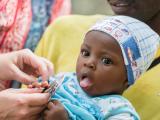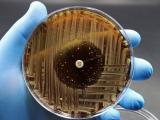The role of agriculture as a source of antimicrobial resistant bacteria (ARB) that may pose a threat to humans is so complex and dimly understood that a reliable risk analysis is nearly impossible right now, according to a recent report in mBio. But the authors suggest that a standardized monitoring program focusing on a few bacterial species and resistance genes could begin to fill the gaps.
The report by Swiss and Irish researchers, published Apr 19, stresses that food is not the only vehicle by which resistant bacteria from agricultural sources can reach people. It also says the frequent sharing of resistance genes between different bacterial species poses a big challenge to understanding the spread of ARB in agriculture, and the problem is compounded by the use of "noncomparable" research methods.
The authors used the data available in Switzerland, with its long-established surveillance laboratories, to assess existing knowledge about AR pathogens in agriculture and the industry's contribution to the overall threat of resistance.
Preventive use permitted
In Switzerland, antibiotics can be used in animal feed and drinking water by prescription for preventive purposes, though use of the drugs to promote growth was banned in 1999, the report says. In 2014, 49,250 kilograms of antimicrobials were sold for veterinary use in the country.
Since 2006, state labs have tested "indicator" bacteria in broiler chickens, pigs, and cattle for resistance. The monitoring showed that in 2014, 6.9% of broiler meat samples carried methicillin-resistant Staphylococcus aureus, and 73.3% carried Escherichia coli armed with the resistance enzyme extended-spectrum beta-lactamase or AmpC beta-lactamase.
While meat samples in Switzerland are tested for antimicrobial drugs and AR bacteria, manure is not. This is a concern, the researchers say, because a large share of the drugs are still active after they are excreted. Hence, manure is a "hot spot" for bacteria that carry antibiotic resistance genes (ARGs) that reside on mobile genetic elements (MGEs). When manure is used to treat soil, the drugs and the ARGs ride along, and they can be passed to soil bacteria.
"The pollution of the environment" by antimicrobial drugs and ARGs probably increases the chance of harmless bacteria and human pathogens to acquire resistance through MGEs that facilitate gene transfer between distantly related bacterial species, the researchers wrote.
They said the introduction of the agents and ARGs into soil means they can be taken up by plants through water and by passive absorption. Several studies have detected resistant bacteria on vegetables or fruits, but too few data are available to establish a relationship between irrigation water or manure containing resistant bacteria or ARGs and their occurrence on produce.
The report further observes that there is no monitoring system for the complex transmission routes of antimicrobial agents (AMA), ARGs, and ARB from manure to soil, water, plant products, and humans. "This is of particular concern, as manure and wastewater treatment plants are reservoirs of AMR and could be utilized as critical control points, where the release of complex mixtures of AMA, ARG, and ARB from farm and urban surroundings to the environment could be controlled."
Gene exchange pathways are elusive
The reality that people are exposed to AR bacteria of animal origin not only through food but also through the release of ARGs into the environment makes for a tough scientific challenge, according to the researchers. "The multiple pathways of gene exchange have so far defeated attempts to qualitatively or quantitatively track the movements of these genes in vivo."
Aside from zoonotic bacteria, such gene transfers make it less likely that the same bacterial hosts will be found in animals and humans and more likely that only the resistant genes will be identifiable in the pathogens that infect humans, the researchers asserted. And the genes may be changed as they jump between hosts. "Thus, it is important that surveillance programs not only focus on pathogenic ARB but also determine the ARB together with the ARG they are carrying."
On the bright side, some newer research tools should help scientists tackle the challenge of tracking ARGs in the environment, the authors note. These include gene detection chips, which have reduced the cost of screening samples for hundreds of resistance genes, along with metagenomics and next-generation sequencing, which make it possible to detect millions of genes within a DNA sample, the authors note.
Too many unknowns for a risk analysis
But the authors presented a long list of knowledge gaps regarding antimicrobial resistance in agriculture. "With the gaps in our data and use of noncomparable methodologies, at this time it is almost impossible to develop a risk analysis based on the actual situation," they wrote.
The report outlines six steps necessary to understand the epidemiology of selection and transmission of resistance. Examples include defining critical control points where interventions could make a difference, developing and measuring the effects of preventive strategies, and studying the prevalence of resistance in the commensal bacteria of livestock that consume feed contaminated with ARB.
To start addressing the huge data gaps, the authors suggest a voluntary monitoring program that would focus on two species, E coli and Pseudomonas aeruginosa, and three specific resistance genes (tet[M], aph, and blaCTX-M) that cover three important antibiotic classes and have been detected in environmental, animal, and human microbiomes.
"A simple worldwide surveillance program of soil, plants, animal, water, and [waste water treatment plants] utilizing the same methods would create the largest database of knowledge on AMR and could be used to generate risk analyses of different ecological compartments," the researchers wrote.
In the meantime, efforts to combat agriculture-linked resistance should include preventing gene flow to and from environmental resistance reservoirs, because there is some evidence that environmental ARGs can be transferred to pathogens, the researchers assert. That means limiting agricultural sources of resistance and finding efficient methods to manage manure and domestic, hospital, and industrial wastewater containing antimicrobial drugs and ARGs.
Thanner S, Drissner D, Walsh F. Antimicrobial resistance in agriculture. mBio 2016 March/April [Full text]























